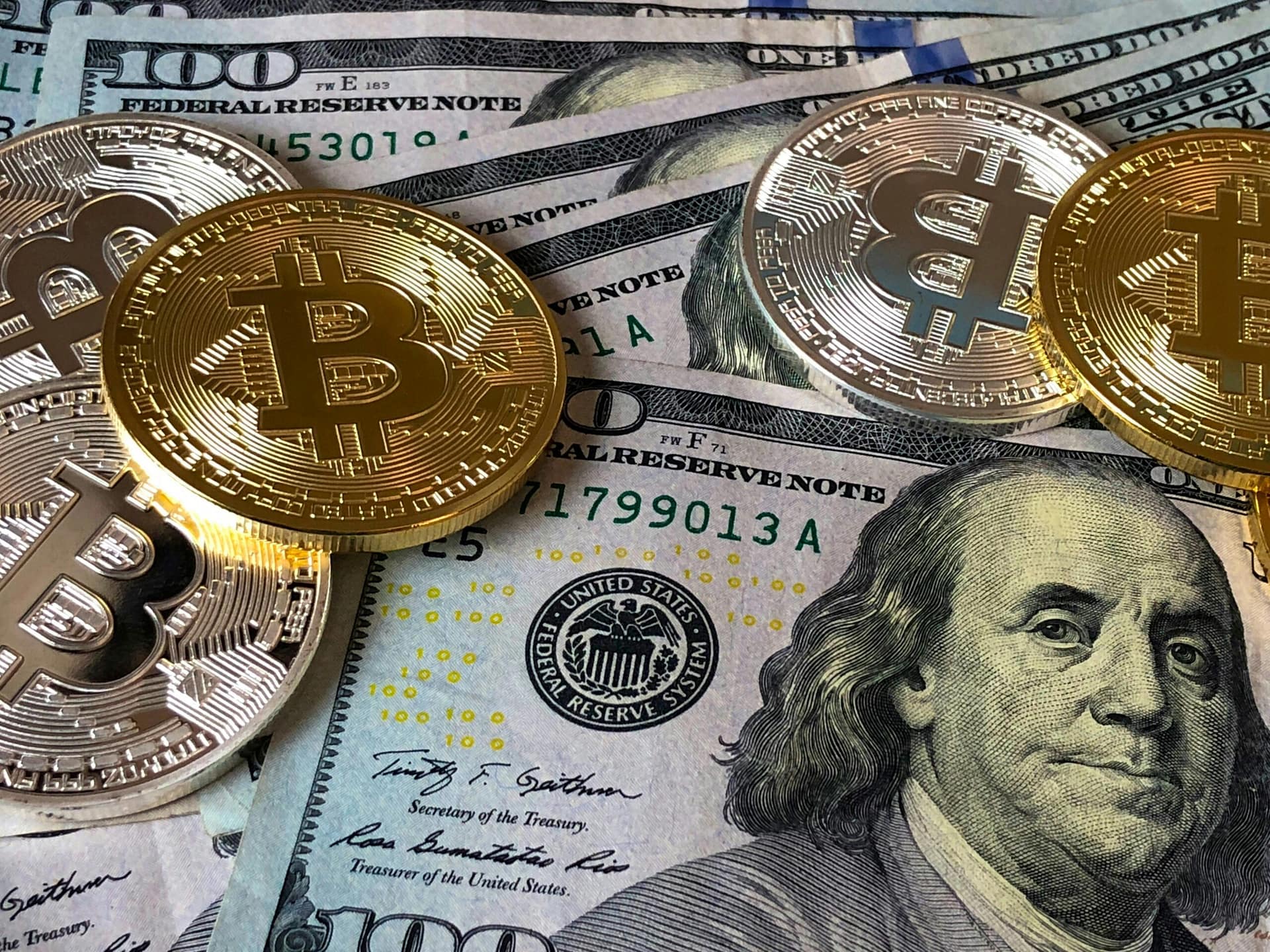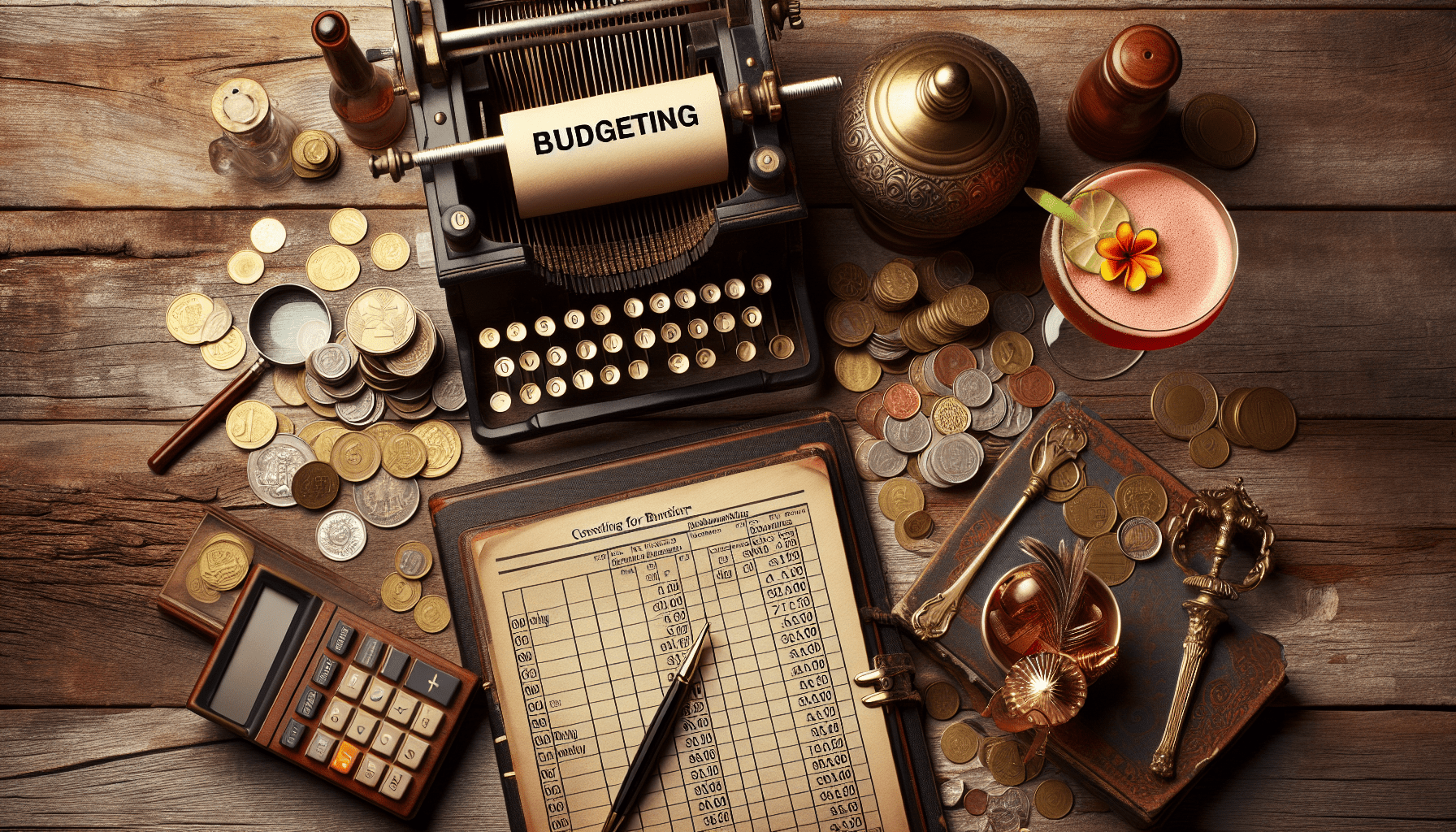Thinking about opening your own bar business? One of the first and most crucial steps in preparing for this exciting venture is creating a budget that covers all the necessary expenses. From securing the location to stocking up on inventory, there are various aspects that need to be considered and planned for. In this article, we will guide you through the process of budgeting for your bar business, providing you with valuable insights and tips to ensure your financial success. So, grab a pen and paper, and let’s get started on turning your dream into a reality!
Market Research
Identify target market
Before starting a bar business, it is crucial to identify your target market. Understanding who your potential customers are will help you tailor your offerings to meet their needs and preferences. Consider factors such as age, income level, and interests to determine the demographic you want to cater to. Conduct market research surveys and analyze data related to demographics and consumer behavior to gain insights into your target market.
Study competitor bars
Another important aspect of market research is studying your competition. Research and analyze other bars in your area to understand their strengths, weaknesses, and unique selling points. This will help you identify areas where you can differentiate yourself and offer something unique to attract customers. Visit competitor bars, try their products, and observe their operations to gain a deeper understanding of the market landscape.
Analyze market trends
Keeping up with market trends is essential for the success of any business, including a bar. Stay updated on the latest industry trends, consumer preferences, and shifts in the market. Identify emerging trends such as craft cocktails, sustainable sourcing, or health-conscious choices, and incorporate them into your offerings. By staying ahead of the curve, you can attract customers who are looking for new and innovative experiences.
Start-up Costs
Lease or purchase of property
One of the major start-up costs for a bar business is acquiring a suitable property. Consider leasing or purchasing a location that is easily accessible, preferably in a high-traffic area. Take into account the size of the space, its layout, and any necessary zoning requirements. Evaluate lease terms, negotiate rental rates, and factor in costs such as security deposits and legal fees. If purchasing, analyze property values and mortgage options to make an informed decision.
Renovations and décor
Creating an inviting and visually appealing atmosphere is crucial for a successful bar business. Budget for renovations and décor to transform the space into a comfortable and stylish environment that aligns with your brand. Consider factors such as lighting, furniture, fixtures, flooring, and artwork. Allocate funds for painting, remodeling, and any necessary construction work to create a unique ambiance that reflects your concept.
Licenses and permits
Operating a bar requires obtaining the necessary licenses and permits to comply with legal regulations. Research the specific licenses and permits required in your jurisdiction, such as liquor licenses, health permits, and entertainment licenses. Allocate funds for application fees, legal consultations, and any ongoing renewal fees associated with maintaining these licenses and permits. Ensure that you are familiar with all the legal requirements to avoid any penalties or disruptions in your operations.
Bar equipment and supplies
Investing in high-quality bar equipment is essential for smooth operations and customer satisfaction. Budget for essential equipment such as bar stools, tables, chairs, refrigeration units, glassware, and bar tools. Depending on your concept and offerings, consider additional equipment like draft beer systems, cocktail stations, or specialized appliances like espresso machines. Research suppliers, compare prices, and allocate funds accordingly to make the necessary purchases.
Initial inventory
To kickstart your bar business, budget for the initial inventory of beverages, ingredients, and supplies. Estimate the range and quantities of alcoholic and non-alcoholic beverages you plan to offer. Take into account the costs of alcoholic beverages, mixers, garnishes, glassware, and other related supplies. Keep in mind seasonal fluctuations and market demand to ensure that you have an adequate supply to meet customer expectations.
Fixed Operating Expenses
Rent or mortgage payments
Rent or mortgage payments represent a significant portion of fixed operating expenses. Include these costs in your budget and consider factors such as location, space size, and market rates. Negotiate favorable terms with landlords or lenders to maximize your profitability. It is essential to allocate a sufficient amount to cover these expenses consistently, ensuring the stability and viability of your bar business.
Utilities (electricity, water, gas)
Utilities, including electricity, water, and gas, are essential for the day-to-day operations of your bar. Estimate your average monthly usage and consult with utility providers to determine the expected costs. Allocate funds for these expenses to ensure a smooth functioning of your establishment. Implement energy-efficient practices to minimize utility costs and contribute to environmental sustainability.
Insurance (property, liability, workers’ compensation)
Insurance coverage is crucial to protect your bar business from unforeseen events and mitigate risks. Budget for insurance premiums for property insurance, liability insurance, and workers’ compensation coverage. Consult with insurance agents to assess your specific needs and find the most suitable coverage options. Adequate insurance coverage provides peace of mind and safeguards your business in case of accidents, property damage, or legal liabilities.
Salaries and wages
Budget for salaries and wages to compensate your employees for their work. Determine the number of staff members required based on your operational needs and anticipated customer volume. Consider industry standards and local labor laws when setting compensation levels. Account for employee benefits such as healthcare, vacation time, and retirement plans in your budget. Ensure that your salaries and wages align with your local market to attract and retain talented personnel.
Taxes (income, sales, employment)
Tax obligations have a significant impact on the financial health of your bar business. Consult with an accountant or tax professional to determine the specific tax liabilities applicable to your business, including income tax, sales tax, and employment tax. Understand the tax rates, filing deadlines, and any deductions or credits that may be available to you. Allocate funds for tax payments to avoid any penalties or legal issues.
Variable Operating Expenses
Inventory restock
Regular inventory restocking is necessary to meet customer demands and maintain a well-stocked bar. Allocate funds for purchasing additional inventory based on sales projections and consumption patterns. Keep track of popular items, seasonal variations, and trends to ensure that you always have a diverse and appealing selection available. Efficient inventory management will help minimize waste and optimize your cash flow.
Marketing and advertising
Allocate a portion of your budget for marketing and advertising activities to promote your bar business effectively. Develop a detailed marketing strategy that outlines your target audience, key messaging, and distribution channels. Consider both online and offline advertising methods such as social media campaigns, paid advertisements, influencer collaborations, and local promotions. Monitor the success of your marketing efforts and adjust strategies as needed to maximize customer reach and engagement.
Entertainment expenses
To attract and retain customers, allocate funds for providing entertainment at your bar. Consider hosting live music performances, trivia nights, karaoke, or other forms of entertainment that appeal to your target market. Budget for booking fees, musician expenses, equipment rentals, and any necessary licenses or permits. Offering unique and engaging entertainment experiences will help differentiate your bar from competitors and drive customer loyalty.
Maintenance and repairs
Maintaining the overall quality and functionality of your bar requires budgeting for maintenance and repairs. Regularly inspect your establishment and identify any necessary repairs or upgrades. Allocate funds for routine maintenance tasks such as plumbing, electrical work, HVAC system maintenance, and general repairs. Prioritize preventative maintenance to minimize unexpected breakdowns or disruptions in your operations.
Cleaning and janitorial services
Maintaining cleanliness and hygiene is vital for a bar business. Budget for cleaning supplies, janitorial services, and waste management to ensure a clean and presentable environment for your customers. Consider hiring professional cleaning services or employing dedicated staff members to handle daily cleaning tasks. Regularly monitor the cleanliness of your bar and address any issues promptly to uphold high standards and customer satisfaction.
Financial Projections
Sales projections
Creating sales projections helps estimate future revenue and set realistic financial goals for your bar business. Analyze historical sales data, market trends, and customer behavior to develop accurate sales projections. Consider external factors such as seasonality, upcoming events, and local economic conditions that may influence sales. Continuously monitor and compare actual sales against projections to identify areas for improvement and take proactive measures to boost profitability.
Cost of goods sold
Determining the cost of goods sold (COGS) is essential for calculating the gross profit margin of your bar business. Estimate the direct costs associated with producing and serving each menu item. Include expenses such as ingredients, beverage costs, packaging, and any other direct expenses. Regularly review and adjust your COGS to ensure accurate pricing and profitability.
Gross profit margin
The gross profit margin is a key indicator of your bar business’s financial health. Calculate the gross profit margin by subtracting the COGS from the total revenue and expressing it as a percentage. A healthy gross profit margin indicates that your business is effectively managing costs and generating sufficient revenue to cover direct expenses. Use the gross profit margin as a benchmark to evaluate the overall profitability of your bar business.
Operating expenses
Operating expenses encompass all the costs necessary for running your bar business. Include both fixed and variable operating expenses in this category. Regularly review your expenses and identify areas where cost reduction or optimization is possible. Analyze expenses such as rent, utilities, insurance, salaries, marketing, and maintenance. Streamlining your operating expenses will contribute to increased profitability and long-term business sustainability.
Net profit
The net profit is the ultimate goal of any business, representing the amount of money left after all expenses, including taxes and interest, have been deducted from revenue. Calculate your net profit by subtracting all operating expenses from your total revenue. Tracking your net profit regularly allows you to assess your business’s financial performance and make informed decisions. Achieving a consistent net profit demonstrates effective business management and creates opportunities for growth and expansion.
Cash Flow Management
Maintain accurate records
Maintaining accurate financial records is crucial for effective cash flow management. Implement a robust accounting system that tracks income, expenses, and cash reserves. Regularly update and reconcile your financial statements to ensure accurate and up-to-date information. Utilize accounting software or seek professional help to streamline your financial record-keeping process and save time.
Monitor cash inflows and outflows
Monitoring cash inflows and outflows is vital to understand the timing and magnitude of your bar’s financial transactions. Create a cash flow forecast that details the expected cash inflows from sales, loans, or investments, as well as the anticipated cash outflows for expenses and debt repayments. Regularly compare your actual cash flow with the forecast to identify any gaps or potential liquidity issues. Timely cash flow monitoring allows you to make informed decisions and take proactive measures to ensure a healthy financial position.
Implement cost-cutting measures
To optimize your cash flow, it is essential to identify opportunities to reduce costs and increase efficiency. Regularly review your expenses and identify areas where savings can be made without compromising the quality of your products or services. Negotiate better terms with suppliers, eliminate non-essential expenses, and implement energy-saving measures to reduce utility costs. Continuously seek ways to streamline operations and drive cost savings to improve your profitability.
Consider a working capital loan
If your bar business is experiencing cash flow challenges or requires additional funds for growth opportunities, consider applying for a working capital loan. Working capital loans provide short-term financing to cover operational expenses and bridge any temporary cash flow gaps. Research different loan options, compare interest rates and repayment terms, and carefully assess the impact of the loan on your overall financial position before making a decision.
Regularly review and adjust budget
Budgeting is an ongoing process that requires regular review and adjustment. As your bar business evolves and market conditions change, revisit your budget to ensure it remains aligned with your goals and objectives. Regularly analyze financial data, industry trends, and customer feedback to identify areas for improvement or investment. Update your budget accordingly, taking into account any changes in fixed and variable expenses, sales projections, and financial targets.
Contingency Planning
Emergency funds
Building emergency funds is crucial for preparing your bar business for unexpected events or financial downturns. Allocate a portion of your budget to create a reserve that can provide a safety net during challenging times. Having adequate emergency funds allows you to handle unforeseen expenses, maintain business continuity, and avoid relying solely on credit or loans.
Insurance coverage
Investing in comprehensive insurance coverage is an essential part of contingency planning. Evaluate your insurance policies to ensure they provide adequate coverage for potential risks and liabilities. Consider policies such as business interruption insurance, general liability insurance, and liquor liability insurance. Regularly review and update your insurance coverage to address any changes in the nature of your business, such as new offerings, expansion, or renovations.
Backup suppliers and vendors
Establishing relationships with backup suppliers and vendors is critical to minimize disruptions in your supply chain. Research and identify alternative suppliers for key products or ingredients to mitigate the risk of shortages or disruptions due to unforeseen circumstances. Maintain regular communication with your backup suppliers to ensure their availability and the quality of their offerings.
Alternative revenue streams
Diversifying revenue streams can provide a cushion during challenging times and enhance the long-term financial stability of your bar business. Explore additional revenue opportunities such as hosting private events or offering catering services. Consider collaborating with local businesses or launching special promotions to attract a wider customer base. By expanding your revenue streams, you can reduce dependence on traditional bar sales and increase your business’s resilience.
Re-evaluate budget in response to unforeseen circumstances
In the face of unforeseen circumstances, such as economic downturns or pandemics, it is crucial to re-evaluate your budget and make necessary adjustments. Analyze your financial projections, expenses, and revenue streams to ensure they remain realistic and achievable in light of changing conditions. Consider implementing temporary cost-cutting measures, revising sales projections, or exploring new business opportunities to adapt to the changing market landscape.
Staffing and Training
Determining staffing needs
Determining the appropriate staffing levels for your bar business is essential for smooth operations and excellent customer service. Assess the workload, including peak hours and customer demand, to determine the number of employees required. Consider factors such as bartenders, barbacks, servers, cooks, and support staff. Regularly review your staffing needs to ensure you have the right team in place to deliver exceptional experiences to your customers.
Recruitment and hiring
Recruit and hire employees who are not only skilled but also align with your bar’s culture and values. Develop a comprehensive job description and utilize various recruitment channels such as online job platforms, social media, and industry-specific networks. Conduct thorough interviews and background checks to ensure a good fit within your team. Provide clear expectations and responsibilities to new hires and facilitate a seamless onboarding process.
Employee training and development
Investing in employee training and development benefits both your staff and your bar business. Implement a comprehensive training program that covers essential skills, product knowledge, customer service standards, and safety protocols. Provide ongoing training opportunities to enhance the skills and expertise of your employees. Regularly assess employee performance, provide constructive feedback, and offer advancement opportunities to retain talented individuals.
Staff retention strategies
Retaining skilled and motivated staff is essential for the long-term success of your bar business. Create a positive work environment that fosters teamwork, open communication, and professional growth. Offer competitive compensation and benefits packages to attract and retain top talent. Provide incentives such as performance bonuses, employee recognition programs, or flexible scheduling options to motivate and engage your staff.
Compensation and benefits
Allocate a portion of your budget for employee compensation and benefits. Research industry standards and local labor laws to ensure compliance. Consider factors such as base salaries, tips, employee benefits (healthcare, retirement plans), paid time off, and employee discounts. Regularly review and adjust your compensation and benefits packages to remain competitive and attract and retain skilled employees.
Inventory Management
Establish inventory control systems
Implementing efficient inventory control systems is crucial to manage and track your bar’s inventory effectively. Utilize software solutions or manual recording methods to monitor inventory levels, track order history, and manage stock rotations. Set par levels for each item to trigger reordering when supplies reach a certain threshold. Regularly conduct physical inventory counts to ensure accuracy and detect any discrepancies.
Track inventory levels
Maintaining optimal inventory levels helps prevent shortages or excess stock, minimizing costs and improving customer satisfaction. Regularly monitor inventory levels to identify slow-moving items, seasonal variations, or any discrepancies. Analyze sales patterns and historical data to determine reorder quantities and frequencies. Align your inventory management with sales projections to ensure that you have the right amount of stock on hand while avoiding excessive carrying costs.
Implement stock rotation
Implement a stock rotation system to ensure that older inventory is used before newer stock. This helps maintain product quality, prevent waste, and optimize inventory turnover. Establish clear guidelines and protocols for storing and organizing inventory, ensuring that the first-in, first-out (FIFO) principle is followed. Regularly review inventory to identify items approaching expiration or quality degradation and take appropriate actions.
Minimize waste and spoilage
Minimizing waste and spoilage is crucial to optimize your bar’s profitability and reduce unnecessary costs. Implement proper storage practices, track expiration dates, and train staff on best practices for handling ingredients and supplies. Monitor and adjust inventory levels to match customer demand and avoid overstocking perishable items. Analyze waste patterns and implement strategies to reduce waste, such as portion control, efficient drink preparation, or creative menu planning.
Negotiate supplier agreements
Negotiating favorable supplier agreements can help reduce costs and improve your bar’s profitability. Research and compare suppliers to identify reliable and cost-effective options. Consider factors such as pricing, delivery terms, payment terms, and product quality. Build strong relationships with your suppliers and explore opportunities for bulk purchases or volume discounts. Regularly review supplier agreements and renegotiate terms to reflect changes in your business needs or market conditions.
Marketing and Promotion
Develop a marketing strategy
Developing a robust marketing strategy is essential for effectively promoting your bar business. Define your target audience, brand message, and unique selling points. Identify the most effective marketing channels and tactics to reach your target market. Develop a comprehensive plan that covers both online and offline marketing activities. Regularly evaluate the success of your marketing efforts and adjust your strategies based on customer feedback and market trends.
Online and offline advertising
Leverage both online and offline advertising methods to maximize your bar’s visibility and reach. Online advertising can include paid digital ads on search engines and social media platforms, as well as content marketing through blogs or influencer collaborations. Offline advertising can involve print advertisements, radio spots, billboards, or strategic partnerships. Create cohesive and engaging messages that resonate with your target audience across different advertising channels.
Social media presence
Establishing a strong presence on social media platforms is essential for connecting with customers and driving brand awareness. Identify the social media platforms most popular among your target audience and develop a content strategy that includes engaging posts, visuals, videos, and interactive elements. Regularly engage with your followers, respond to comments and inquiries promptly, and use social media analytics to evaluate the effectiveness of your efforts.
Customer loyalty programs
Implementing customer loyalty programs can help foster customer loyalty and increase repeat business. Develop a loyalty program that offers incentives and rewards for frequent visits, referrals, or purchases. Utilize a digital loyalty platform or a traditional punch card system to track and reward customer participation. Regularly communicate with program members and offer personalized promotions or exclusive offers to enhance customer satisfaction and loyalty.
Partnerships and collaborations
Collaborating with other local businesses or organizations can help expand your customer base and create mutually beneficial partnerships. Identify potential partners who align with your brand and target market. Formulate partnership strategies that involve hosting joint events, sponsoring community activities, cross-promotions, or joint marketing campaigns. Developing strategic partnerships enables you to tap into new networks and reach potential customers who may not be familiar with your bar.





